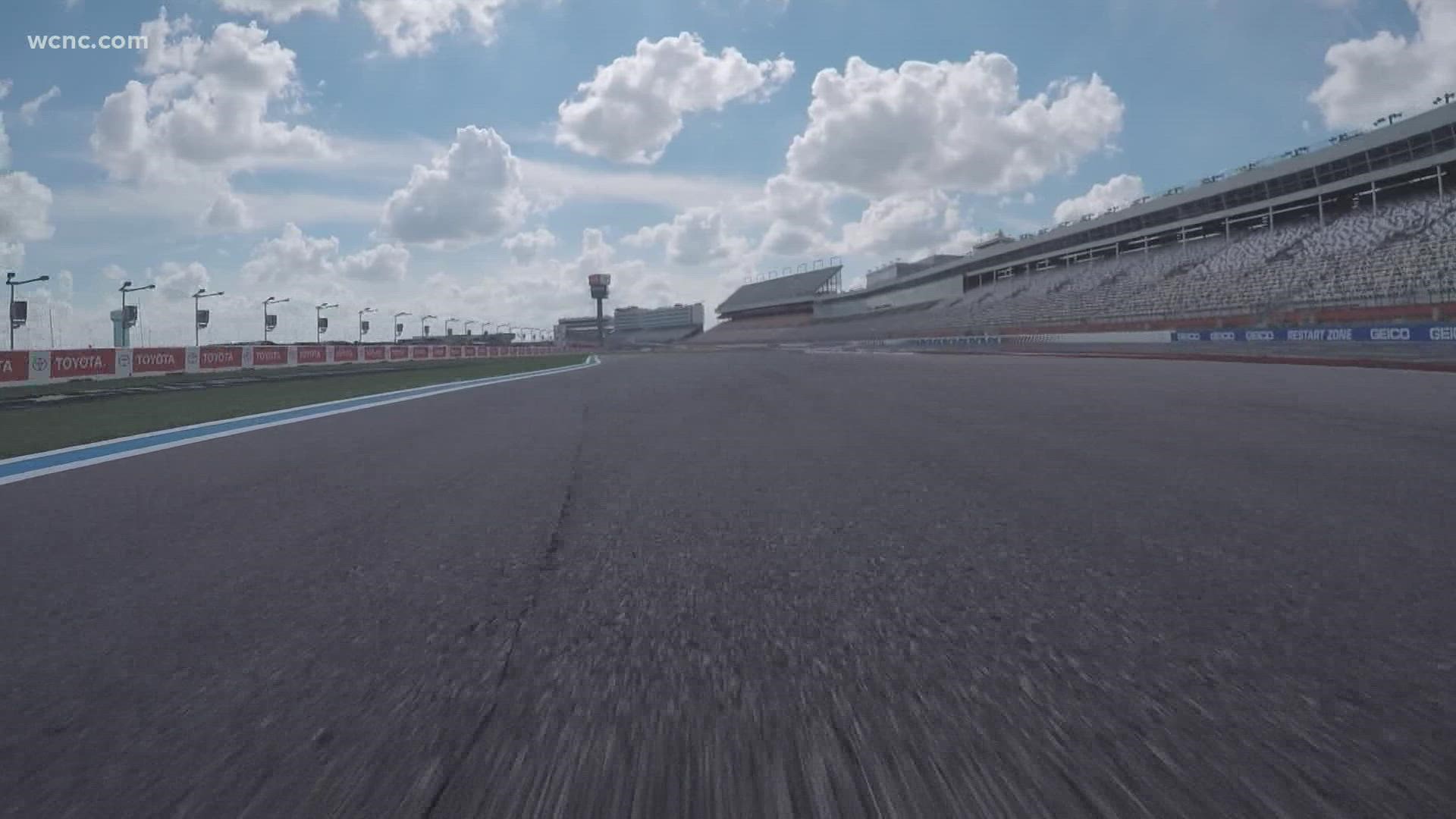CONCORD, N.C. — A vision for something new and different in NASCAR has now become a pillar of the playoffs.
For four years, Charlotte Motor Speedway ROVAL (half road course, half oval) has provided excitement as the playoffs cut off from 12 to eight drivers.
The 2.28-mile track has 17 turns and two narrowing chicanes on both the front and backstretch.
Drivers who top out at about 105 mph (the track record is 106.868 set by Kurt Busch), must suddenly drop down to first gear on other portions of the track.
The track's Executive Vice President/GM Greg Walter gave WCNC Charlotte an exclusive look at the course layout the best way he knows how: driving it.
Walter drove as Sports Director Nick Carboni was along for the ride in the passenger's seat, asking questions.
Carboni: Turn 1 is a sharp left-hand turn right off of the start/finish and pit road, how challenging is that?
Walter: Once you cross the yellow line it is on like Donkey Kong to get the speed up really quick.
C: As they go through the meat of the road course, what are the drivers trying to accomplish speed-wise and staying on track?
W: Obviously trying to get as much gain in position and then set up for the next turn. With this being such a technical course, drivers are thinking two or three turns ahead in terms of maximizing what they do. In a road course, braking zones equal passing zones.
C: How do teams set up the car for a half road and half oval? That has to be challenging.
W: That was one of the objections early on for us. The teams, the amount they would have to invest to set up these cars properly to be able to handle the physics and dynamics the car has to go through.
C: How important is the front-stretch chicane before the start/finish line?
W: Speedway President Marcus Smith wanted a place where it's like the bottom of the ninth, bases loaded, two outs. It's that last-ditch effort. You saw that right away with Truex and Jimmie Johnson in 2018.
ROVAL BY THE NUMBERS
- 2.28 miles: lap distance
- 17: turns
- 35 feet: elevation change from highest to lowest on the ROVAL
- 54 feet: width, at widest point, of backstretch chicane
- 106.868 mph: Kurt Busch's record lap speed at the 2018 Bank of America ROVAL 400 qualifying
- 5,400 gallons of red, white and blue paint originally used to accent the ROVAL
- 30,000 tires used in constructing safety barriers
- 35,380 work hours to complete original ROVAL construction
- 3,000 work hours from May to October to prepare the ROVAL every year
C: How much fun was it to be tasked with helping set this up? Something totally different in NASCAR but you're breaking tradition to do it.
W: It was incredibly exciting. To be part of a team that brought all of this to life. This was a vision Marcus had to do something different. We have this culture of being constructively discontent. Going from good to great or great to awesome. The ROVAL was a manifestation of that, doing something different in racing. There was no room for error. We needed to be sure we got it right the first time. If we didn't get it right, the naysayers would say we should never make those kinds of changes, this was a bad idea. There was a lot of stress and pressure we put on ourselves, that this had to be perfect the first time out.
The challenges that the ROVAL presents to a team are unlike anything else they experience. You have this blended oval-road course and the greatest drivers in the world. The ROVAL presents challenges that bring out the best.
Contact Nick Carboni at ncarboni@wcnc.com and follow him on Facebook and Twitter.

